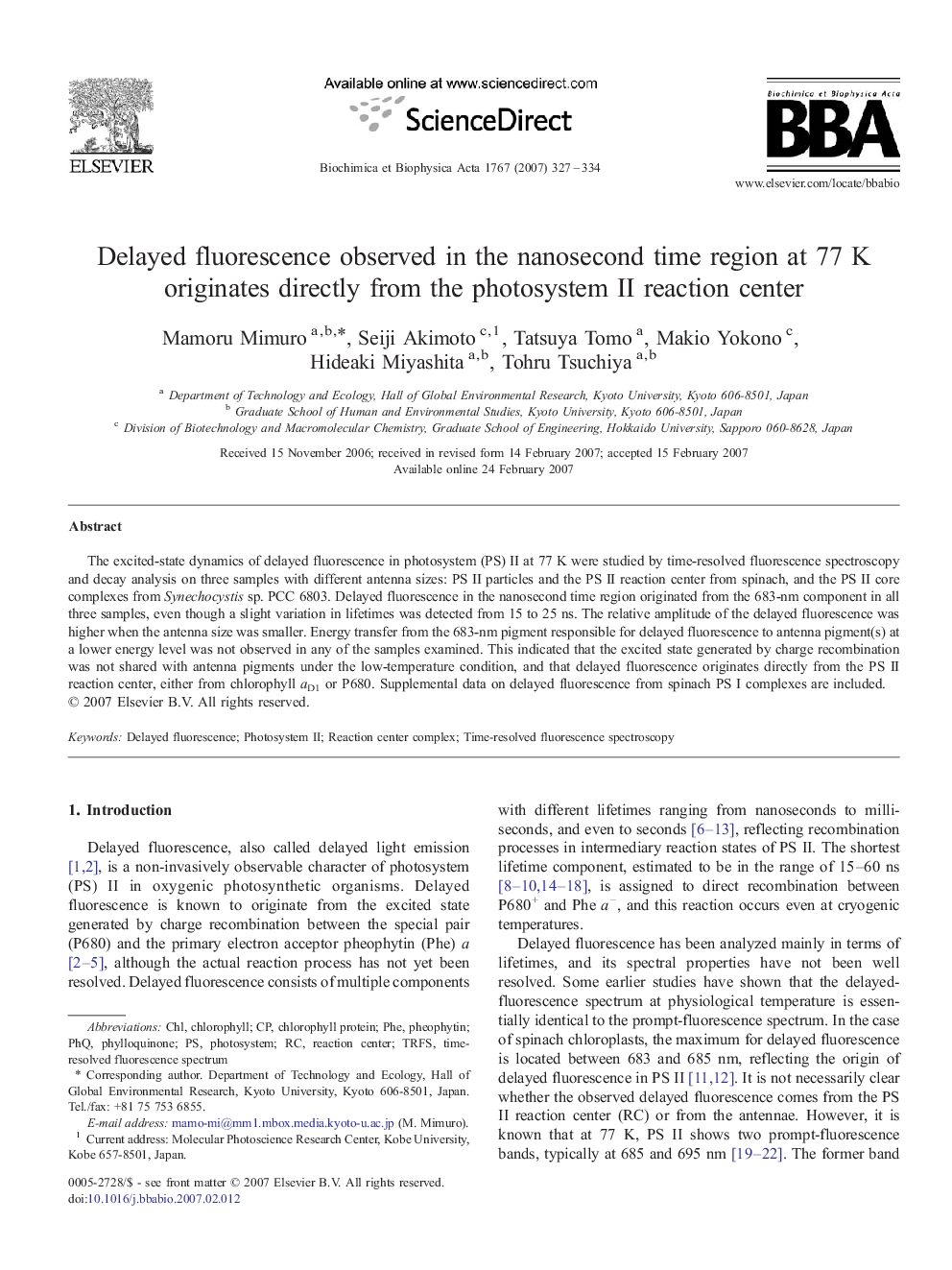| Article ID | Journal | Published Year | Pages | File Type |
|---|---|---|---|---|
| 1943534 | Biochimica et Biophysica Acta (BBA) - Bioenergetics | 2007 | 8 Pages |
The excited-state dynamics of delayed fluorescence in photosystem (PS) II at 77 K were studied by time-resolved fluorescence spectroscopy and decay analysis on three samples with different antenna sizes: PS II particles and the PS II reaction center from spinach, and the PS II core complexes from Synechocystis sp. PCC 6803. Delayed fluorescence in the nanosecond time region originated from the 683-nm component in all three samples, even though a slight variation in lifetimes was detected from 15 to 25 ns. The relative amplitude of the delayed fluorescence was higher when the antenna size was smaller. Energy transfer from the 683-nm pigment responsible for delayed fluorescence to antenna pigment(s) at a lower energy level was not observed in any of the samples examined. This indicated that the excited state generated by charge recombination was not shared with antenna pigments under the low-temperature condition, and that delayed fluorescence originates directly from the PS II reaction center, either from chlorophyll aD1 or P680. Supplemental data on delayed fluorescence from spinach PS I complexes are included.
